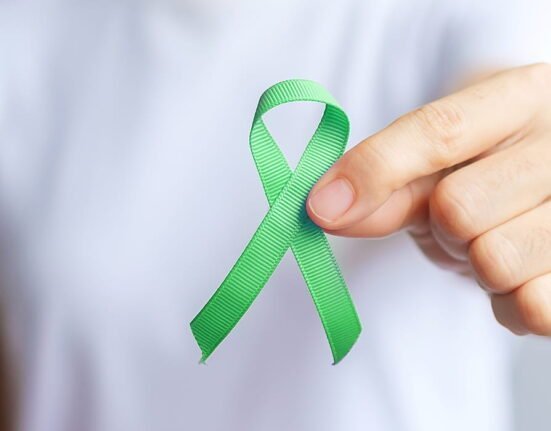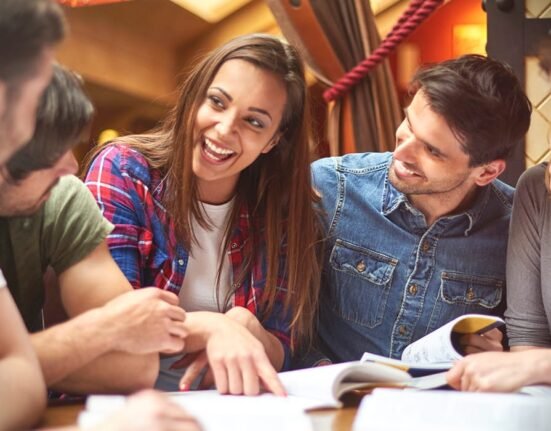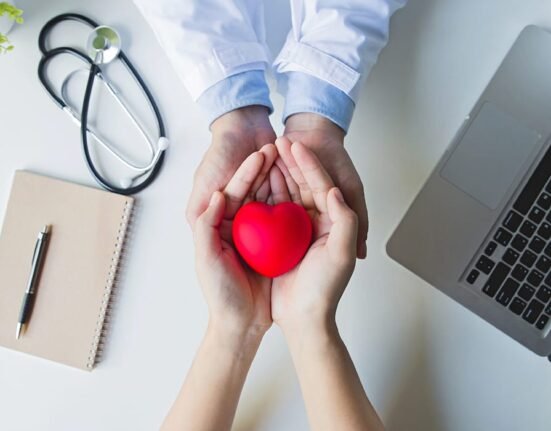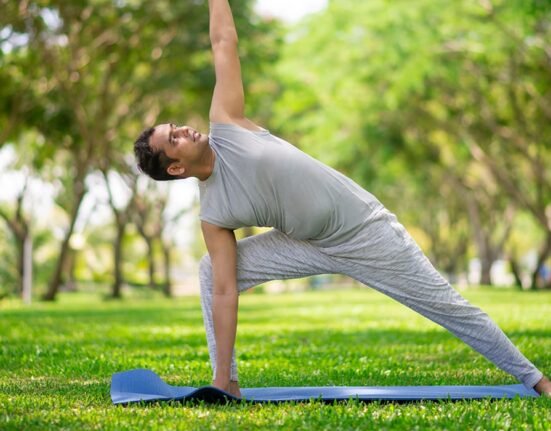The richness of present-moment experience is the richness of life itself. Too often we let our thinking and our beliefs about what we ‘know’ prevent us from seeing things as they really are.
Kabat-Zinn
How often can you completely focus on the present in today’s fast-paced world? Sometimes you get tense about the future and other times worrying about the past. You may often forget to be in the present moment. Mindfulness and flow are two prominent psychological concepts that help you regain focus on the present moment, enjoy it, and improve your performance and well-being.
Understanding Mindfulness
Mindfulness, rooted in Eastern philosophy and Buddhism, is now used worldwide for the well-being of people. In the APA Dictionary of Psychology, mindfulness is the awareness of one’s internal states and surroundings. It encourages openness to new experiences and helps you focus on the present moment without judgment.
Read More: The Profound Context of Buddhism and Psychology
Qualities of Mindfulness
By practicing mindfulness regularly, you can achieve the following qualities:
- Gratitude: Being grateful for the present moment
- Trust: Trusting yourself, your body, and your emotions.
- Nonstriving: Staying unattached to goals and outcomes.
- Letting go: Releasing thoughts and feelings without suppressing them.
- Gentleness: Being kind and considerate. It doesn’t mean being passive.
- Generosity: Giving others without the expectation of anything in return.
- Acceptance: Being able to see things as they are and respond effectively.
- Patience: Letting things unfold at their own pace without getting rushed.
- Loving-kindness: Can show compassion, and love to oneself and others.
- Nonjudging: Being in the present moment without evaluating or categorizing.
- Openness: Viewing things as if for the first time and paying attention to all feedback.
- Empathy: Ability to understand and feel others’ situations and communicate them.
Read More: Psychologist’s Insights on Empathy and its Psychological Foundations
Bringing Mindfulness to Daily Life
When you are overwhelmed with stressful situations, mindfulness meditation will help you to bring awareness to the present moment. You don’t need to be a monk or expert to do this. Anyone can practice mindfulness with patience and consistency. Now you may be wondering how to do this. You can begin your journey to mindfulness by simply following the steps below:
- Find a calm, distraction-free place and schedule a time to practice mindfulness.
- Sit in a comfortable position. Stay relaxed and alert.
- Begin observing your thoughts without judging them.
- Now, gradually bring attention to each inhale and exhale. Count them from 1 to 10. When you reach 10, return to 1 again and continue as a cycle. If you find yourself exceeding 10, it depicts your mind wandering.
- When mind wandering happens (it’s often possible), gradually bring your attention back to breathing without judging.
- Once you have practised mindfulness breathing, you can use sensation, sound, and thought as your point of concentration.
Read More: Understanding Mindfulness-Based Stress Reduction (MBSR)
Mindfulness practice doesn’t always need a specific place and sitting still. In this busy life, you can practice mindfulness anywhere in suitable ways. Some examples are;
- Mindful Stretching exercises: you can use gentle stretching exercises for this. Engage in it slowly with moment-to-moment awareness of breathing and sensations.
- Body Scan Meditation: Try focusing on each part of your body, gradually from feet to head. Attend to the corresponding sensations. This helps you understand your physical sensations and their connection to your mental states.
- Being Mindful of Emotions: Observe your emotions without getting stuck with them. Be compassionate and non-judgemental. This will help you to keep negative emotions from intensifying.
- Loving-Kindness Meditation: This involves bringing loving and kind energy towards yourself and others. You can be compassionate to yourself, grateful for who you are, use reassuring statements, and so on. Then, you can think about your loved ones and feel gratitude towards them.
Finding just 5 minutes a day for mindfulness can even bring you relaxation and refreshment. Practising it regularly helps you to deal with stress, anxiety, depression, negative emotions, or relationship issues. It also paves the way to increase concentration and develop self-compassion.
Read More: 10 Meditation Techniques Everyone can (and should) Explore
Understanding Flow
Sometimes you may experience yourself completely absorbed into an activity you enjoy. Positive Psychologist Csíkszentmihályi called it flow, a state of complete immersion in an activity. Different people experience this in different ways. Experiencing flow isn’t restricted to any specific activity. You can experience this in a variety of activities For example, an artist may be completely immersed in their artwork without being aware of time. When you are in a flow state, you can experience:
- Experiencing the activity as intrinsically rewarding.
- Loss of self-consciousness as a social actor.
- Complete focus on the present activity.
- Integration of action and awareness
- Feeling in control of one’s actions.
- Losing awareness of the time
Read More: Understanding Flow State and How It Drives Peak Performance
How is Mindfulness Connected to Flow?
Mindfulness and flow are somewhat similar. Both focus on the importance of living in the moment and engaging in inherently rewarding activities. These practices will help you reduce your negative emotions, and contribute to good mental health. Apart from similarities, there are also some differences between mindfulness and flow.
You know mindfulness requires complete and continuous awareness of each moment, whereas flow involves the loss of this inner observer by falling into a continuous activity. Don’t take mindfulness as a barrier to flow. Researchers suggest practising mindfulness helps you to reach flow. To experience flow, you need to be fully present and subconsciously focused on an activity.

Many scholars, including Chen et al. (2022), put forward that concentrating on the present moment is a key way to achieve this state. Evidence from athlete studies suggests mindfulness benefits flow experiences (Sparks & Ring, 2022) and athletes rated higher mindfulness were more likely to experience flow (Hill et al., 2020). In psychotherapy, practicing mindfulness closely relates to flow changes, and mindfulness therapy can effectively promote flow (Chen et al., 2018).
Adding mindfulness to your daily life can benefit you in several ways. You can achieve flow more readily in your preferred tasks than before. You can also bring enjoyment and focus to tiring important tasks in your life.
Read More: Flow: the Process of transformation in time
Achieving Flow through Mindfulness
Now we know mindfulness is a gateway to flow. How to make it into practice? Make practicing mindfulness a habit. Along with that, you need to be clear about your goals to achieve flow. After setting clear goals, choose a distraction-free environment. This will help you maximise the benefits of mindfulness and flow. To experience flow, you need to tackle tasks that fully utilize your talents. Prefer tasks of medium-level challenge — too much causes irritation and too little results in boredom. Start small and gradually improve them to the next stages.
Read More: Discovering Blissful Focus: Get into the Flow State
Conclusion
Mindfulness and flow provide you with a more focused and fulfilling life. By practicing mindfulness regularly, you will achieve flow more quickly in various activities. No matter what kind of activities you choose, whether personal or professional, mindfulness and flow can enhance your experience. Begin with small goals. Start with mindful breathing, eliminate distractions, and gradually get deep into the tasks. With continuous practice, you can achieve flow more often and get the benefits of mindfulness and flow in all aspects of your life. Remember that these results cannot be achieved quickly, and need regular practice and patience.
References +
American Psychological Association. (n.d.). Mindfulness. In APA Dictionary of Psychology. Retrieved December 17, 2024, from https://dictionary.apa.org/mindfulness Chen, H., Liu, C., Zhou, F., Cao, X., Wu, K., Chen, Y., Liu, C., Huang, D., & Chiou, W. (2022). Focused-Attention meditation improves flow, communication skills, and safety attitudes of surgeons. International Journal of Environmental Research and Public Health, 19(9), 5292. https://doi.org/10.3390/ijerph19095292
Chen, H., Liu, C., Zhang, A., Lu, W., Wu, K., & Chiou, W. (2024). How flow and mindfulness interact with each other in mindfulness-based augmented reality mandala coloring activities. Frontiers in Psychology, 14. https://doi.org/10.3389/fpsyg.2023.1301531
Chen, J., Tsai, P., Lin, Y., Chen, C., & Chen, C. (2018). Mindfulness training enhances flow state and mental health among baseball players in Taiwan. Psychology Research and Behavior Management, Volume 12, 15–21. https://doi.org/10.2147/prbm.s188734
Csikszentmihalyi, M. (1978). “Intrinsic Rewards and Emergent Motivation” in The Hidden Costs of Reward. ed. M. R. L. A. D. Greene (Morristown, NJ: Lawrence Erlbaum Associate), 205–216.
Hill, A., Schücker, L., Wiese, M., Hagemann, N., & Strauß, B. (2020). The influence of mindfulness training on running economy and perceived flow under different attentional focus conditions – an intervention study. International Journal of Sport and Exercise Psychology, 19(4), 564–583. https://doi.org/10.1080/1612197x.2020.1739110 Jackson, S. A., and Csikszentmihalyi, M. (1999). Flow in Sports. Human Kinetics.
Kabat-Zinn, J. (2005). Full catastrophe living: Using the wisdom of your body and mind to face stress, pain, and illness. (15th anniversary ed.). Delta.
MSEd, K. C. (2023, March 28). How to achieve a state of flow. Verywell Mind. https://www.verywellmind.com/what-is-flow-2794768#toc-what-is-flow
Nien, J. T., Wu, C. H., Feng, S. H., Chiu, W. H., and Chang, Y. K. (2018). The association among dispositional mindfulness, mental skill, flow and performance. J. Sport Exerc. Psychol. 40:S110
Ning, J. H., Hao, Q. W., and Huang, D. C. (2022). Effects of “mindfulness acceptance insight commitment” training on flow state and mental health of college swimmers: a randomized controlled experimental study. Front. Psychol. 13:799103. doi: 10.3389/ fpsyg.2022.799103
Scott, E., PhD. (2022, December 1). What is mindfulness? Verywell Mind. https://www.verywellmind.com/mindfulness-the-health-and-stress-relief-benefits-314518 9
Scott, E., PhD. (2024, February 12). What is body scan meditation? Verywell Mind. https://www.verywellmind.com/body-scan-meditation-why-and-how-3144782 Shapiro, S. J., Schwartz, G. E. R., & Santerre, C. (2002). Meditation and positive psychology. In
C. R. Snyder & S. J. Lopez (Eds.), The handbook of positive psychology (pp. 632-645). New York: Oxford University Press. Copyright Oxford University Press, Inc.Used by permission of Oxford University Press, Inc. Handbook of positive psychology
Sheldon, K. M., Prentice, M., & Halusic, M. (2014). The experiential incompatibility of mindfulness and flow absorption. Social Psychological and Personality Science, 6(3), 276–283. https://doi.org/10.1177/1948550614555028
Sparks, K. V., & Ring, C. (2022). A rowing-specific mindfulness intervention: Effects on mindfulness, flow, reinvestment, and performance. Frontiers in Psychology, 13. https://doi.org/10.3389/fpsyg.2022.871804
Walker, C. J. (2010). Experiencing flow: is doing it together better than doing it alone? J. Posit. Psychol. 5, 3–11. doi: 10.1080/17439760903271116













Leave feedback about this